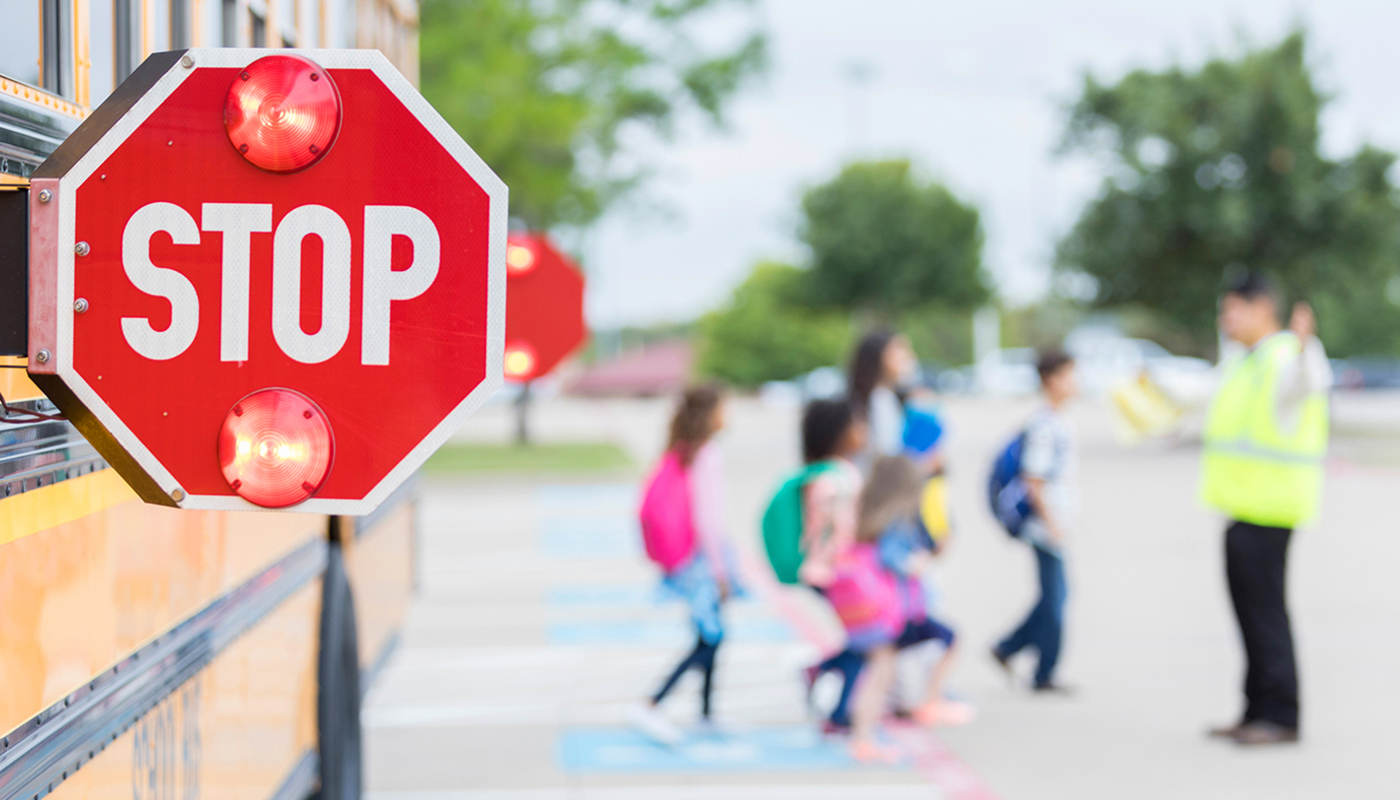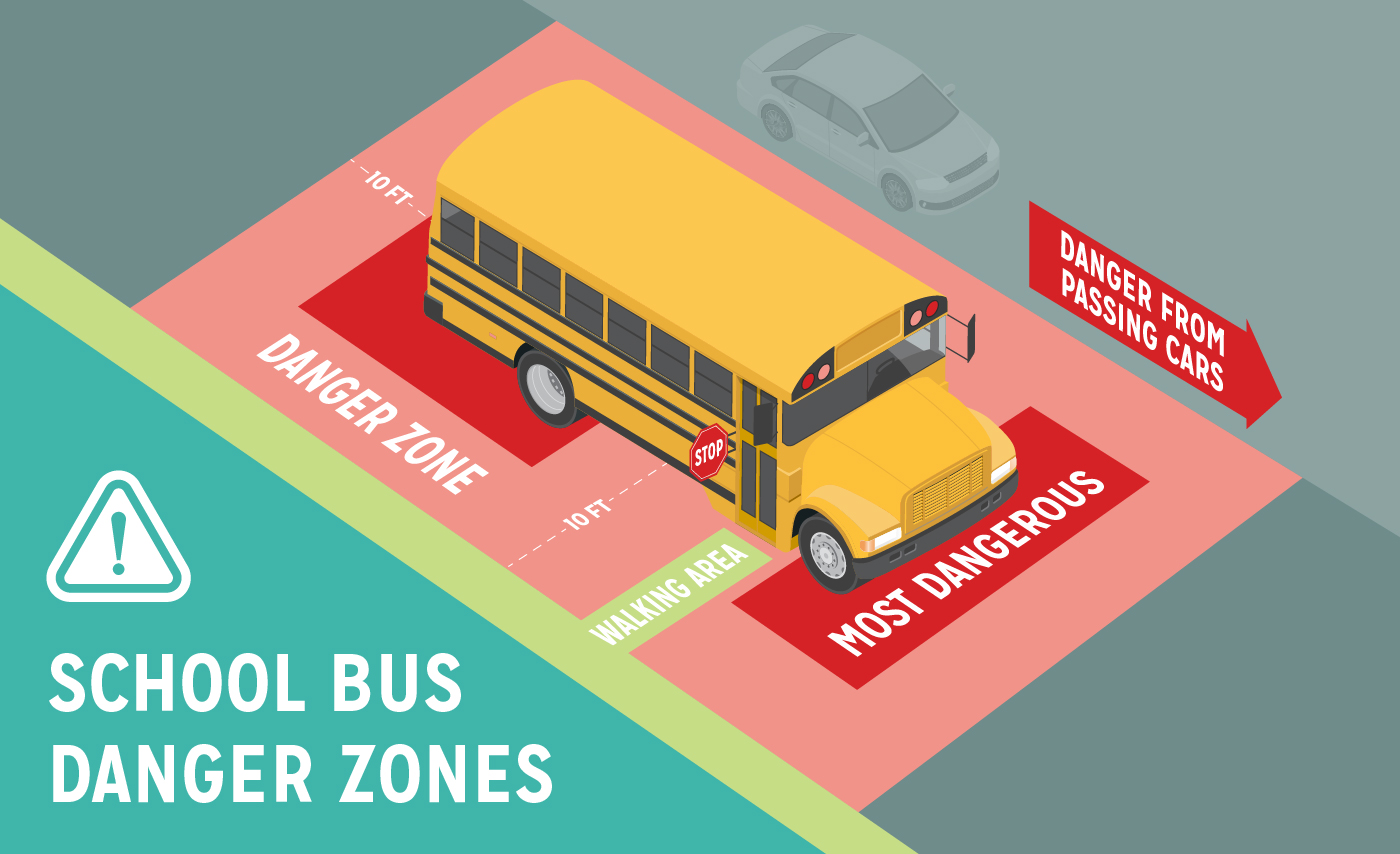What You Should Know About Sharing the Road With School Buses
The greatest risk to students isn't riding a bus, but approaching or leaving one. Plus: How to become a school bus driver.

Clogged roads, stopped buses, lower speed limits—when school starts back, traffic patterns change. This impacts everyone: drivers, parents and students.
While riding a school bus is safer than riding to school in the family vehicle, according to the National Highway Traffic Safety Administration, school buses still offer unique challenges to motorists. Keep these tips in mind for sharing the road with school buses—and driving near schools and bus stops:
When you're driving near buses and schools
Slow down. Speed limits in school zones are reduced for a reason. In fact, a pedestrian struck by a car traveling at 25 mph is nearly two-thirds less likely to be killed compared to a pedestrian struck by a vehicle traveling 10 mph faster.
Eliminate distractions. Taking your eyes off the road for just two seconds doubles your risk of crashing. And since children can cross the road unexpectedly and emerge suddenly between two vehicles, avoiding distractions like using your phone or eating is key to sharing the road with school buses.
Come to a complete stop. More than one-third of drivers roll through stop signs in school zones or neighborhoods. Always come to a complete stop and check carefully for children on sidewalks and in crosswalks before proceeding.
Observe the school bus laws in your state. Know the laws in your state for safely sharing the road with school buses, and remember the meaning of flashing signal lights that school bus drivers use:
- Yellow flashing lights indicate the bus is preparing to stop for students to get on or off. You should slow down and prepare to stop, too.
- Red flashing lights and extended stop arms indicate the bus has stopped and children are getting on or off. Stop your vehicle and wait until the red lights stop flashing, the extended stop-arm is withdrawn, the bus begins moving and no children are in the street before you start driving again.
When you're driving near bus stops
Reverse carefully. Every vehicle has blind spots, and backup cameras don't show your entire surroundings. Check for children on sidewalks, in driveways and around your vehicle before slowly backing up.
Be alert. Students late for the bus may run into the street without looking for traffic, so always slow down and watch for children near bus stops.
Beware of blind spots. A bus has several spots around it where students can't see approaching vehicles, and vice versa.

Arrive early. Get your children to the bus stop five minutes before the bus is scheduled to arrive, stand at least three giant steps (6 feet) from the curb and ensure your children know that the bus stop isn't a place to run or play.
Wait for the bus to fully stop. When it arrives, make sure the bus comes to a complete stop and the door opens before your kids approach it.
Don’t walk behind a school bus. When crossing in front of or beside the bus, ensure you and your children:
- Walk on a sidewalk or along the street at least three giant steps from the side of the bus.
- Make sure there are at least five giant steps (10 feet) between you and the front of the bus.
- Look at the driver for a signal to cross.
- Look to the left, right and left again.
- Keep watching the traffic as you walk in front of the bus.
- If you drop something under the school bus, get the bus driver's attention and ask them for help.
Do you have what it takes to become a school bus driver?
Where are the buses?
That's the question many parents are asking their school districts, as a school bus driver shortage disrupts classrooms across the country. According to a National School Transportation Association survey, 94% of respondents reported being short-staffed on bus drivers. The driver deficit hinders education for many of the more than 25 million students who ride school buses yearly.
When the COVID-19 pandemic forced schools to close their doors, virtual learning became the only safe option. But the shift from in-person learning left the bus driver occupation in a state of uncertainty. Most companies downsized, and many drivers left the industry, seeking other opportunities.
The aftermath: closed routes and fewer stops, causing school delays across districts. Now students are trying to return to the classroom only to have no way to get there.
While the shortage is a challenge for families and schools, it creates a unique opportunity for workers to launch new careers. Maybe someone like you?
According to Indeed.com, school bus drivers can start making as much as $28.95 an hour in some areas and have the option to work a flexible schedule that's ideal for retirees and entry-level talent. Whether you're looking for a part-time opportunity to supplement income, a new full-time career or a way to give back, a job as a school bus driver could be for you. Here's how to climb aboard.

1. Get your commercial driver's license (CDL).
Earning your CDL is the first step to becoming a school bus driver. The training requires weeks of studying procedures, hours of practicing, and passing road and skills tests. Drivers also must undergo background and fingerprint screenings.
The process usually costs thousands of dollars, a significant investment for job seekers. But bus companies and districts are covering training fees as an incentive for new applicants.
When serial entrepreneur and district volunteer Paul Doyle learned of the added benefit and how the crisis impacted students' learning ability, he decided to drive part-time.
"The process of becoming a driver is actively supported. You get paid during the training, and they cover all out-of-pocket expenses."
Some companies offer sign-on bonuses and are willing to pay for additional licenses. If drivers already have a C license (permitting them to drive school vans), Logan Bus Company will pay for B license training (for bigger buses), says Corey J. Muirhead, Logan's executive vice president. "You're already halfway there and might want to make more money by driving the bigger buses, so we'll pay to help you do that."
2. Have patience.
Driving a bus of 50 children and the CDL training may sound intimidating. Between the other drivers, multiple written DMV tests, concern about children darting in front of cars and road tests, it can be hard to see the big yellow bus at the end of the tunnel.
But Doyle, a lifelong AAA member, believes it's worth the sacrifice. He insists the regulations and strenuous training go hand in hand to help provide more safety. "You don't just jump on the bus, load up kids and start driving. There are hours of driving the bus before a passenger other than the trainer ever gets on with you."
3. Forget what you think you know.
Bus drivers come in all shapes and sizes. "There's this amazing variety of people with different stories, backgrounds, physical characteristics, ages and genders," says Doyle.
Many adults have fond memories of their school bus drivers. They were the first face you saw in the morning on your way to school and the last person to bid you goodbye on your way home.
4. Almost anyone can learn to drive a school bus.
School districts and public officials are working together to identify a solution to the crisis. But despite their efforts, the fact remains that they need more drivers to answer the call. "If you can't get kids to school, then all the great programming in the world goes to waste. If you want to make a real impact, be a part of the solution," Doyle says.